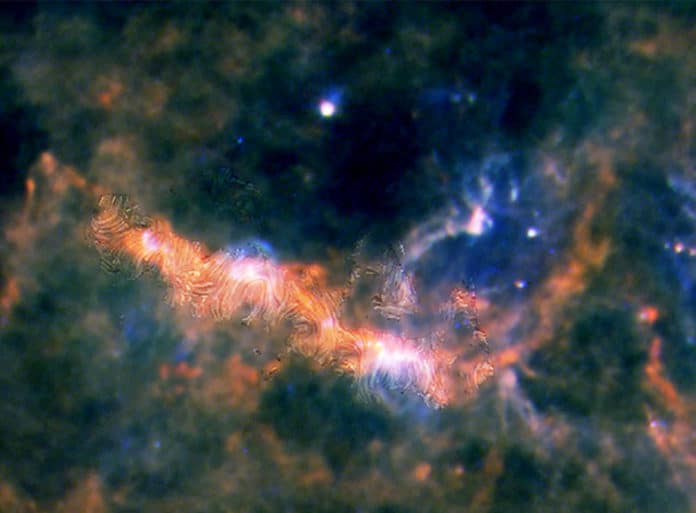As a part of a joint project of NASA and the German Space Agency at DLR, the Stratospheric Observatory for Infrared Astronomy (SOFIA) produced the most detailed map of the magnetic field within a part of one of the Milky Way’s spiral arms called a galactic bone. This is the most detailed map yet the magnetic field of G47—a giant filamentary bone in the Milky Way. G47 is 200 light-years in length and five light-years in width.
Over a dozen of these dense and long filaments have been found within the Milky Way. They are often referred to as bones. Magnetic fields in the bones were believed to be aligned with respect to the bone. But, SOFIA hints that this is generally not the case. It reveals that the magnetic fields do not follow the spiral shape of the galaxy’s arms. They are not also perpendicular to the bones.
Previously it was difficult to image magnetic fields at high resolution over the entirety of the bones. SOFIA makes it possible. It also made several independent measurements of the magnetic field direction across these bones. This offers insights into the importance of the magnetic field in these massive filamentary clouds.
Ian Stephens, an astrophysicist at Worcester State University and lead author of the paper, said, “Magnetic fields can potentially set the rate at which stars form in a cloud. They can also guide the gas flow, shape the bones, and affect the quantity and size of the densest pockets of gas that will eventually collapse to form stars. By mapping the orientation of the fields, we can estimate the relative importance of the magnetic field to that of gravity to quantify how much magnetic fields affect the star formation process.”
Scientists also determined that the magnetic fields are strong enough to prevent gas in many areas from succumbing to gravitational collapse to form stars. The magnetic fields in the G47 bone change directions frequently. However, they trended perpendicular to the bone in the densest areas.
This means the parallel fields from the less dense regions are feeding material into the denser regions, where fields play a key role in the star formation rate by impeding the birth of new stars.
Filaments Extremely Long and Dark: a MAgnetic Polarization Survey (FIELDMAPS) project is the first attempt to map the magnetic field of any galactic bone in its entirety.
Journal Reference:
- Ian W. Stephens et al. The Magnetic Field in the Milky Way Filamentary Bone G47. DOI: 10.3847/2041-8213/ac4d8f
